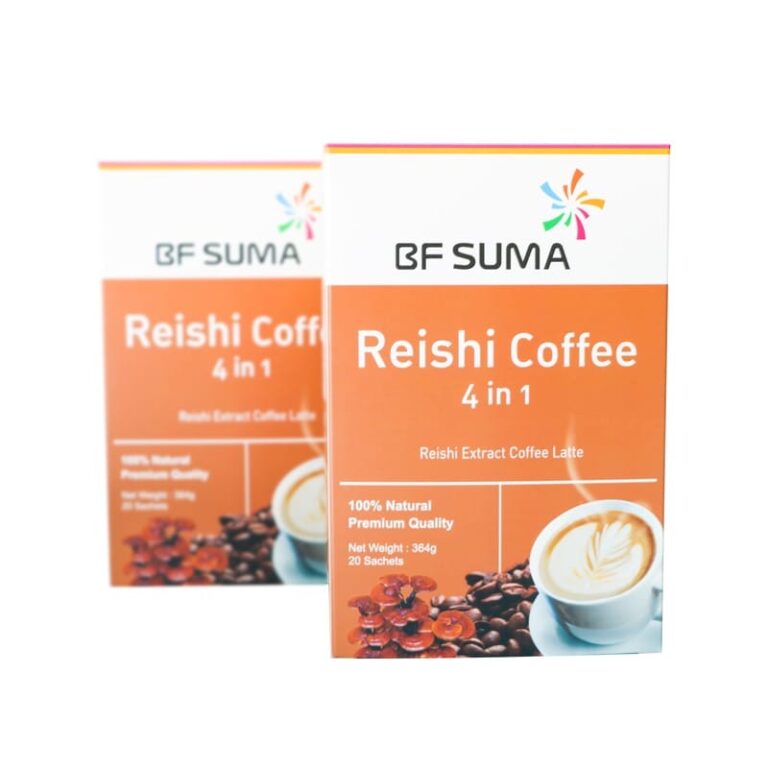What Is Chenopodium Quinoa Good For?
It is a pseudo grain that has a great nutritional value due to the fact that it is abundant in proteins, lipids, fiber, vitamins, and minerals, and that it has an exceptional balance of important amino acids.
In addition, quinoa has a high concentration of phytochemicals that are good to one’s health. These phytochemicals include saponins, phytosterols, and phytoecdysteroids.
Is Bathua Same As Quinoa?
A pseudocereal, commonly known as quinoa (Chenopodium quinoa), quinoa is a grain that isn’t derived from grasses like wheat or rice.
Instead, quinoa is linked to vegetables such as the leafy green known as bathua (Chenopodium album).
What Is Quinoa Seed Used For?
Quinoa is used to produce flour, soup, and even beer in the culinary world. Quinoa may also be used in lieu of cereals like wheat in meal preparation for individuals who must steer clear of gluten due to medical conditions like celiac disease.
💥🎁 Christmas & Year-End Deals On Amazon !
Don't miss out on the best discounts and top-rated products available right now!
🛒 Shop Now & Save Big Today!*As an Amazon Associate, I earn from qualifying purchases.
It has been found that quinoa seeds can be used for applications including bread, breakfast cereal, instant breakfast, and baby food.
The seed’s flour can be used to make pasta and even crackers. It is also possible to use the seed for its oil. Quinoa is also known to have a variety of uses in cosmetic products.
Does Quinoa Have DHA?
Linoleic acid and linoleneic acid are the two key essential fatty acids that may be found in quinoa. These two acids can be converted into arachidonic acid and either eicosapentaenoic acid (EPA) or docosahexaenoic acid (DHA), depending on which one is needed.
Vitamin E and the other antioxidant components found in quinoa seeds work together to provide excellent oxidation resistance for these fatty acids.
What Percentage Of Quinoa Is Protein?
The amount of protein contained in quinoa varies according on the varietal; the edible component typically contains anywhere from 10.4 to 17.0 percent protein.
Quinoa is renowned more for the quality of its protein than for the quantity of protein it contains, despite the fact that it normally contains more protein than most cereals.
💥🎁 Christmas & Year-End Deals On Amazon !
Don't miss out on the best discounts and top-rated products available right now!
🛒 Shop Now & Save Big Today!*As an Amazon Associate, I earn from qualifying purchases.
The quinoa protein content is between 10%-15%.
Quinoa has no cholesterol, its low in saturated fats, and has no trans fats. The carbohydrate content is 71% of total volume. Quinoa also contains magnesium, phosphorus, potassium, zinc, copper and manganese.
Like other grains, quinoa could possibly contain gluten. If you have gluten intolerance or celiac disease be sure to check the labels before purchasing any quinoa products.
How Do You Eat Quinoa Seeds?
Cook quinoa in the same manner as oats, using twice as much milk or water as quinoa, until it’s tender and the outer germ begins to spiral away from the seed.
Mix almonds, diced apple, raisins, cinnamon, and a touch of brown sugar into a hot cup of quinoa and top with plain yogurt for a filling breakfast.
Is Quinoa A Millet?
Millet and quinoa are both considered to be whole grains; however, quinoa is considered to be a pseudocereal due to the fact that it contains the full grain kernel.
💥🎁 Christmas & Year-End Deals On Amazon !
Don't miss out on the best discounts and top-rated products available right now!
🛒 Shop Now & Save Big Today!*As an Amazon Associate, I earn from qualifying purchases.
Quinoa is not a type of millet. Millet refers to the seed of a cereal grass, sometimes called an ejecta. Quinoa is a member of the goosefoot family and is a pseudocereal that grows in moist soil and robs the ground of moisture by rooting itself to its roots.
Because quinoa does not need water it does not go through similar occurrences as others grains do when they are being harvested or cultivated.
What Are The Side Effects Of Quinoa?
Quinoa despite having the many health benefits, on the other hand, may trigger stomachaches, itchy skin, hives, and other typical food allergy symptoms in some people.
Quinoa is however low in sodium and high in calcium, potassium, and iron, making it a nutritionally balanced and beneficial addition to any diet.
Although rare, some people with celiac disease may react negatively to quinoa.
Although the majority of people will not experience any serious problems when eating quinoa, it is important to know that there is a small chance of experiencing side effects after eating quinoa.
💥🎁 Christmas & Year-End Deals On Amazon !
Don't miss out on the best discounts and top-rated products available right now!
🛒 Shop Now & Save Big Today!*As an Amazon Associate, I earn from qualifying purchases.
Some possible negative effects include bloating and flatulence.
Is Quinoa Harmful To Humans?
Quinoa, in point of fact, has a variety of irritating and poisonous substances for the intestines, which can lead to inflammation, digestive issues, and problems with the body’s ability to absorb nutrients.
On the other hand quinoa is rich in nutrients and is generally safe for those who eat it. It is also an excellent source of dietary fiber, tannins, carbohydrates, calcium, iron, phosphorous, thiamin and riboflavin.
Quinoa is one of the most environmentally friendly cereals on the planet since it uses fewer resources to grow than virtually any other crop.
Is Quinoa Good For Hair Growth?
Quinoa is a rich source of nine essential amino acids, which have been shown to naturally strengthen hair follicles and repair hair by nourishing and moisturizing the scalp.
This, in turn, promotes the growth of hair. According to studies, humectants, which are naturally occurring substances, can provide a layer of protection on the scalp that shields it from pollutants and dust.
💥🎁 Christmas & Year-End Deals On Amazon !
Don't miss out on the best discounts and top-rated products available right now!
🛒 Shop Now & Save Big Today!*As an Amazon Associate, I earn from qualifying purchases.
Quinoa has a long history of use in hair growth products. Quinoa contains an amino acid, lysine that is essential for the brain to create new neurons.
Lysine helps to repair damaged cells and is vital for hair growth. It has been shown that lysine promotes healthy skin and nails and increases the ability of your body to assimilate iron.
Quinoa also contains saponins which help reduce dandruff and restore a healthy balance on your scalp by making it easier for your skin to repair itself.
Is Quinoa Anti-Inflammatory?
Quinoa is a well-known nutritious pseudocereal that has a high amount of both dietary fiber and polyunsaturated fatty acids. Additionally, it is regarded as a source of protein that is of a particularly high quality.
In addition to this, it is loaded with phytochemicals that are known to reduce inflammation21–23, and as a result, it may offer some degree of protection against the consequences of inflammation.
Quinoa is considered to be an anti-inflammatory food. This is because it is a good source of omega-3 fatty acids, which are known to help reduce inflammation throughout the body.
💥🎁 Christmas & Year-End Deals On Amazon !
Don't miss out on the best discounts and top-rated products available right now!
🛒 Shop Now & Save Big Today!*As an Amazon Associate, I earn from qualifying purchases.
Additionally, quinoa is also a good source of fiber, which can also help to reduce inflammation.
Does Quinoa Have Vitamin E?
Contrasting with wheat, quinoa is high in vitamin E, vitamin C, and vitamin A. Quinoa also provides double the amount of iron and zinc.
Quinoa is a grain that is often considered a super food because of its many nutritional benefits. One of the nutrients found in quinoa is vitamin E.
Vitamin E is a fat-soluble vitamin that plays a role in maintaining cell membranes and protecting the body against oxidative stress. Quinoa is a good source of vitamin E, providing about 2 mg of this nutrient per cup.
Is Omega-3 In Quinoa?
Quinoa, in compared to other types of grain, has a greater concentration of monounsaturated fat. Quinoa also includes trace levels of omega-3 fatty acids, which are beneficial to the heart.
Because it has a high concentration of phytonutrients with anti-inflammatory properties, quinoa has the potential to be useful for human health in the treatment and prevention of disease.
💥🎁 Christmas & Year-End Deals On Amazon !
Don't miss out on the best discounts and top-rated products available right now!
🛒 Shop Now & Save Big Today!*As an Amazon Associate, I earn from qualifying purchases.
There is a chance the omega-3 fatty acid present in quinoa may be alpha-linolenic acid.
Is Quinoa A Diuretic?
Quinoa is also lactiferous, insect repellant, digestive, vermifuge, and emetic in addition to being a diuretic.
In cases of urinary tract catarrh, quinoa can be used topically in the form of dressings or poultices to provide a calming and anti-inflammatory effect. It irritates and burns open wounds and sores.
It is effective in the treatment of contusions, sprains, shocks, and internal bleeding or purging. Many people eat quinoa pre-menstrual because it is thought to help with weight loss and bladder control. Quinoa is a diuretic, meaning that it promotes the flow of urine by increasing the amount of sodium in the body.
In addition to its diuretic capabilities, it also contains large quantities of dietary fiber. Because it is high in fiber and low in sodium, quinoa may also be a good choice for people who have problems urinating.
How Often Should You Eat Quinoa?
It is possible to consume between one and two cups of cooked quinoa in a single day. In addition, if one consumes quinoa and then has stomach pain, itching, or vomiting after doing so, the individual should refrain from eating quinoa.
💥🎁 Christmas & Year-End Deals On Amazon !
Don't miss out on the best discounts and top-rated products available right now!
🛒 Shop Now & Save Big Today!*As an Amazon Associate, I earn from qualifying purchases.
It’s possible that someone has an allergy to quinoa.
Quinoa is a good source of protein and essential amino acids. It is especially high in lysine content, which can help boost your body’s ability to manufacture new proteins.
This is extremely important for helping the body heal and repair itself after injury or surgery.
Quinoa has been found to be particularly beneficial for individuals who are recovering from burns, as it contains larger amounts of glutamine than other foods.
Is Red Quinoa Good For You?
Protein, fiber, and a variety of essential vitamins, minerals, and other nutrients may be found in abundance in red quinoa. Additionally, it contains more antioxidants than other types of quinoa, which may be beneficial to the health of the heart.
Because it is a gluten-free pseudocereal, it has the potential to enhance the general nutritional quality of a diet that excludes gluten. 5.
💥🎁 Christmas & Year-End Deals On Amazon !
Don't miss out on the best discounts and top-rated products available right now!
🛒 Shop Now & Save Big Today!*As an Amazon Associate, I earn from qualifying purchases.
Red quinoa is a nutritious grain that can be a healthy addition to your diet. It is a good source of protein and fiber, and it contains a variety of vitamins and minerals.
Red quinoa is also a low-glycemic food, which means it won’t cause a spike in your blood sugar levels.

